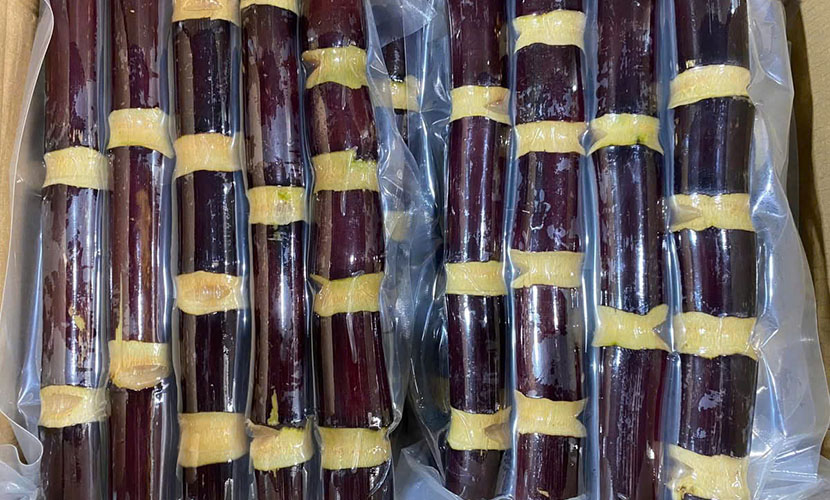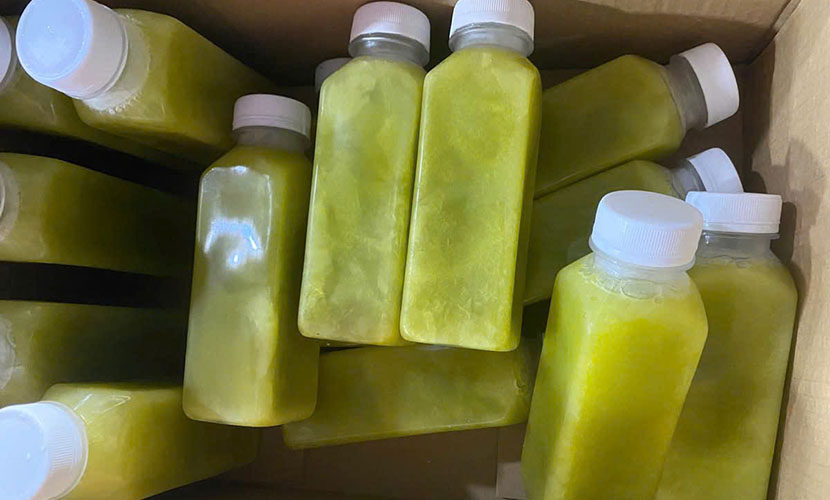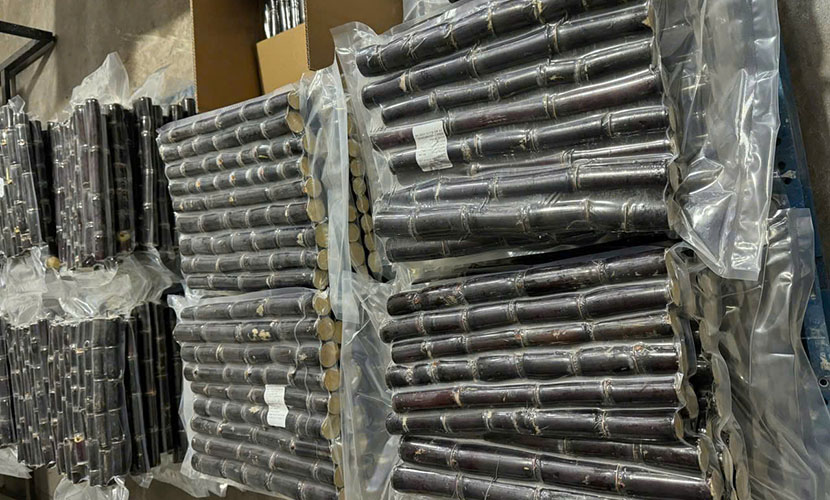
Hoa Binh province has the highest output and quality of Vietnamese purple sugarcane. However, due to insufficient consideration of supply and demand, local farmers have not truly benefited from this specialty crop.
Hoa Binh’s purple sugarcane is famous for by long and thick trunks, sweet taste and high juice content. Therefore, it is suitable for direct consumption. However, current regional market demand is declining, as consumers now have more choices such as oranges, pomelos, and other citrus fruits. Meanwhile, the area and output of purple sugarcane in Hoa Binh continue to increase, leading to an oversupply crisis.

Vietnamese purple sugarcane
Mr. Yen, head of the province, said that the traditional market for Vietnamese purple sugarcane is the northern region. For this market, an area of from 500 to 1,500 hectares is appropriate. However, the province’s current purple sugarcane area has reached 3,200 hectares. Moreover, according to the plan, the area will reach 9,500 hectares by 2020 and 10,000 hectares by 2030.
As supply has exceeded demand, sugarcane growers in Hoa Binh have been severely affected in recent years. Ms. Hien, a local grower, shared that in 2015, when rice prices dropped sharply, her family boldly converted over 3,000 square meters to sugarcane cultivation.
In the early years, sugarcane sold well, usually at 5,000–7,000 VND per stalk, with some years reaching 10,000 VND. However, in 2019, the price fell to only 2,000–3,000 VND per stalk, putting her family in financial distress. Currently, she has cut down half of her Vietnamese purple sugarcane area to switch to other crops.

Vietnamese sugarcane juice
Under current conditions, the decline of Hoa Binh’s sugarcane is not due to poor quality. The reason is that local authorities and farmers have failed to calculate suitable market outlets. In a market economy, the law of supply and demand is the key issue. Before starting production, farmers need to estimate the potential output market of sugarcane. Therefore, to expand production scale, a consumption market must first be secured.
For Hoa Binh’s purple sugarcane, the traditional market is the northern region. Given its high stability, farmers should maintain the current cultivation area while prioritizing trade promotion in other regions.
In fact, since 2018, Hoa Binh’s purple sugarcane has exported to the Japanese market, but the results have not met expectations. Specifically, in 2019, Hoa Binh exported only three tons of sugarcane to Japan. The main reason is that Vietnamese purple sugarcane could not compete with Chinese sugarcane, which is much cheaper.

Vietnamese sugarcane packing
Mr. Thai, a director of a fruit export company in Vietnam, said that Hoa Binh’s sugarcane has an advantage over other regions’ varieties as it is tender and juicy, making it suitable for direct consumption. This is a competitive strength compared to similar products. However, for sustainable development, the key issue is that farmers need to focus on promoting and researching markets.
According to Mr. Thai, exporting to the Japanese market is the right direction. Notably, this is a demanding market with high requirements. In the future, producers need to focus on improving quality, researching varieties, and refining processes to create products with superior quality and reasonable prices, enabling them to compete with producers in other countries.
Vietnamese source: https://baodantoc.vn/huong-di-nao-cho-cay-mia-tim-hoa-binh-1570418636822.htm
